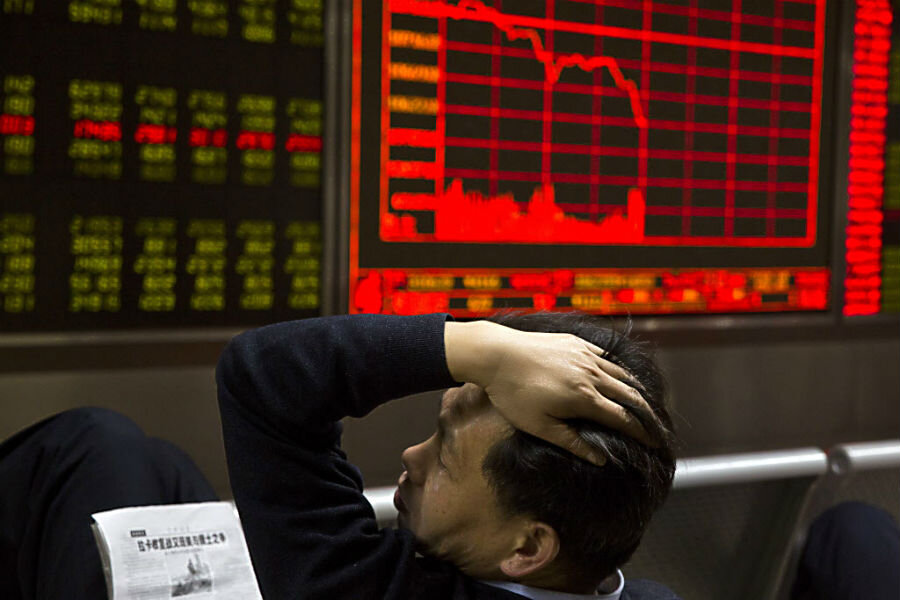The Trump presidency: What happens now on trade?
Loading...
The surprise victory of Donald Trump, who has threatened to impose tariffs and tear up trade pacts, will unnerve leaders concerned about economic stability. Hillary Clinton was seen as a more internationalist leader who favored deeper economic ties. But the populist US backlash against free trade and outsourcing, together with Mr. Trump’s nationalist foreign policy pronouncements, likely deals a death blow to the Trans-Pacific Partnership (TPP) and makes any new trade deals unlikely.
Q: Where does TPP stand? Could it still go ahead?
The US and 11 other parties agreed on the final version of the TPP in October 2015. The agreement goes beyond cutting tariffs on goods and sets out broad rules for foreign investment and cross-border regulation. Proponents argue that it would establish US-preferred standards in countries that represent 40 percent of the world’s economic output. The agreement excludes China, which has already signed free-trade deals with many of its neighbors.
President Obama could seek approval from the lame-duck Congress for the deal, but even before the election it was a hard sell. “The writing looks like it’s on the wall,” says Ian Bremmer, founder and president of Eurasia Group, a political-risk consultancy.
While TPP is an economic pact, it also serves a strategic goal for the US. The Obama administration framed its diplomatic and economic outreach to Asia as a rebalancing, or “pivot,” one that has raised hackles in Beijing. Tearing up the agreement would repudiate that approach.
“Were the US to completely slam the doors on a free-trade agreement that they themselves initiated would inflict major and lasting damage on US prestige in the Asia region,” says Kevin Rudd, president of the Asia Society Policy Institute in New York.
Trump has repeatedly lambasted TPP as a terrible deal. As president, he could seek to renegotiate it – and take credit for any perceived gains for US workers – but that would be unpalatable for countries like Japan that believe that they have already made major concessions in terms of economic openness.
Q: How is the Trump presidency likely to be received in Asia?
While Mrs. Clinton is a familiar figure from her time as secretary of State under Mr. Obama and, further back, as first lady, Trump is an unknown quantity. That uncertainty is compounded by the ambiguity of his policies, particularly on trade and investment.
“We assume from his statements that he would kill the TPP. We glean from his statements that the walls of protectionism would be resurrected. We don’t know how the region would react in terms of retaliatory measures against the US,” says Mr. Rudd, a former Australian prime minister.
Trump’s threat to put up barriers to trade in order to benefit US workers and penalize companies that produce goods overseas comes at a sticky time for world trade.
Asian leaders that rely on US markets will have to take this threat seriously, says Sanchita Basu-Das, an economics fellow at the Institute of Southeast Asian Studies in Singapore. “I think he will follow through. At least for the next two to three years, trade will take a back seat,” she says.
Q: Where does China fit into this picture?
China has used its economic leverage in Asia to advance its territorial claims in the South China Sea and to make sure that trade agreements fit its state-led model of development. And when the US failed to make room for China and other developing countries in US multilateral financing agencies, China set up its own version, the Asian Infrastructure Investment Bank.
Should TPP run aground, China would be a beneficiary since it is already trying to bind the region’s economies into its own, particularly in terms of supply chains, says Ms. Basu Das. “It has a much bigger idea of regional economic integration,” she says.
That doesn’t mean that the US would be shut out since its multinationals are so central to global trade. Being on the sidelines of future trade talks won’t end those advantages, says Mr. Bremmer. “We just have to recognize that there’s a very assertive China out there, particularly in Asia, and it is going to pick up a lot of ground while this is happening,” he says.
Q: What other pending trade deals will be in the president-elect’s inbox?
Since 2013, the US and the European Union have been negotiating a free-trade deal, the Transatlantic Trade and Investment Partnership, that has proven hard for both sides to finalize. Controversy in Europe has focused in part on provisions in TTIP that would allow international investors to sue governments. Britain’s decision to leave the EU has also complicated the talks, since Britain has been a strong voice for liberalizing trade.
The political backlash to trade in the US and Europe comes at a time of slowing global integration. Since 2008, trade has accounted for a lower share of total economic output than before. One leading indicator of global trade is container shipments: Last year was the first time that growth in container traffic was lower than overall global growth of 2.5 percent.







